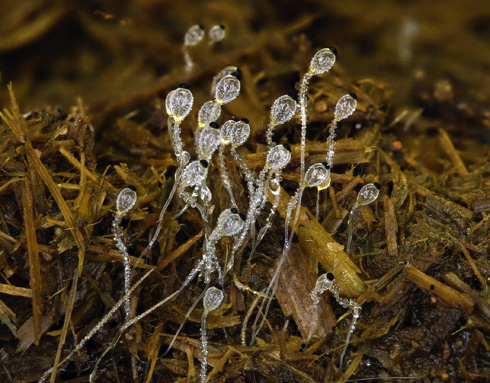To prevent lungworm causing problems in your herd it is vital to plan ahead. Relying on anthelmintics can be risky as it is very difficult to predict exactly when outbreaks will occur as they are dictated by the weather.
The clinical signs of lungworm include:
- Coughing
- Increased breathing rate
- Fever
- Milk drop
- Death
Lungworm can persist from year to year in two ways:
- Overwintered larvae may survive on pasture from autumn until late spring in sufficient numbers to initiate infection.
- 10-20% of previously grazed animals carry some larvae over winter → these larvae recommence development in spring and contaminate the pasture.
The larvae levels on pasture gradually build up and outbreaks are usually seen from July onwards; often after a period of warm, wet weather.
In comparison to gut worms, lungworms produce many more eggs, which develop into the infective stage within the faecal pat in 1 week, regardless of the weather (gut worm eggs only develop if the weather conditions are favourable → this can take weeks). This allows the number of infective larvae on pasture to build up rapidly.

Lungworm larvae are expelled in the faeces. The larvae leave the faecal pat to the surrounding grass. The larvae can move further afield using the Pilobolus fungus, which “explodes” making the larvae airborne. Watch the fungus explosion here: https://www.youtube.com/watch?v=TrKJAojmB1Y
Dry, hot summers reduce lungworm contamination on pasture but this creates a future risk as repeated exposure to the parasite is needed to maintain immunity.
Affected dairy herds can lose on average 4kg milk/cow/day (estimated £140 per cow), with an average increase in calving interval of 30 days. Body condition loss is seen and heavy infections may result in death. Suckler herds will see a drop in conception rates, an increased barren rate and a loss of body condition. Reduced milk yields will have a knock-on effect on daily liveweight gain in the calves.
We are increasingly seeing lungworm outbreaks in older cows. Possible reasons for this include:
- Reliance on long-acting wormers in calves.
- Wet and warm summer weather.
- Early turn outs (previously grazed stock contaminate pastures with larvae that have overwintered in their lungs)
- High stocking density (more cows = more shedding of lungworm → numbers build up on pasture quickly).
Vaccination provides the best form of protection which will last for the duration of the grazing season. Alternatively, targeted treatment of calves with anthelmintics at times of peak risk can work, but it can be difficult to accurately predict the perfect window for treatment. The use of long-acting worming products is not advised as this does not allow calves to develop their own immunity, is detrimental to dung beetle populations, and increases the risk of anthelmintic resistance.
Cattle need to encounter lungworm at every grazing season to boost their immunity. To ensure immunity without the detrimental effects of this disease, cattle should either receive a booster of lungworm vaccine or be treated with an appropriate anthelmintic at times of peak risk. Purchased heifers and adult cows may succumb to disease if they have not encountered lungworm or been vaccinated previously. If grazed these should be given a complete course of vaccination prior to turn out.
Lungworm outbreaks are detrimental for welfare and costly:
- Parasitic pneumonia can result in severe lung damage
- Reduced growth rates
- Prolonged disease
- Death
- Reduced milk yield in adult cows
